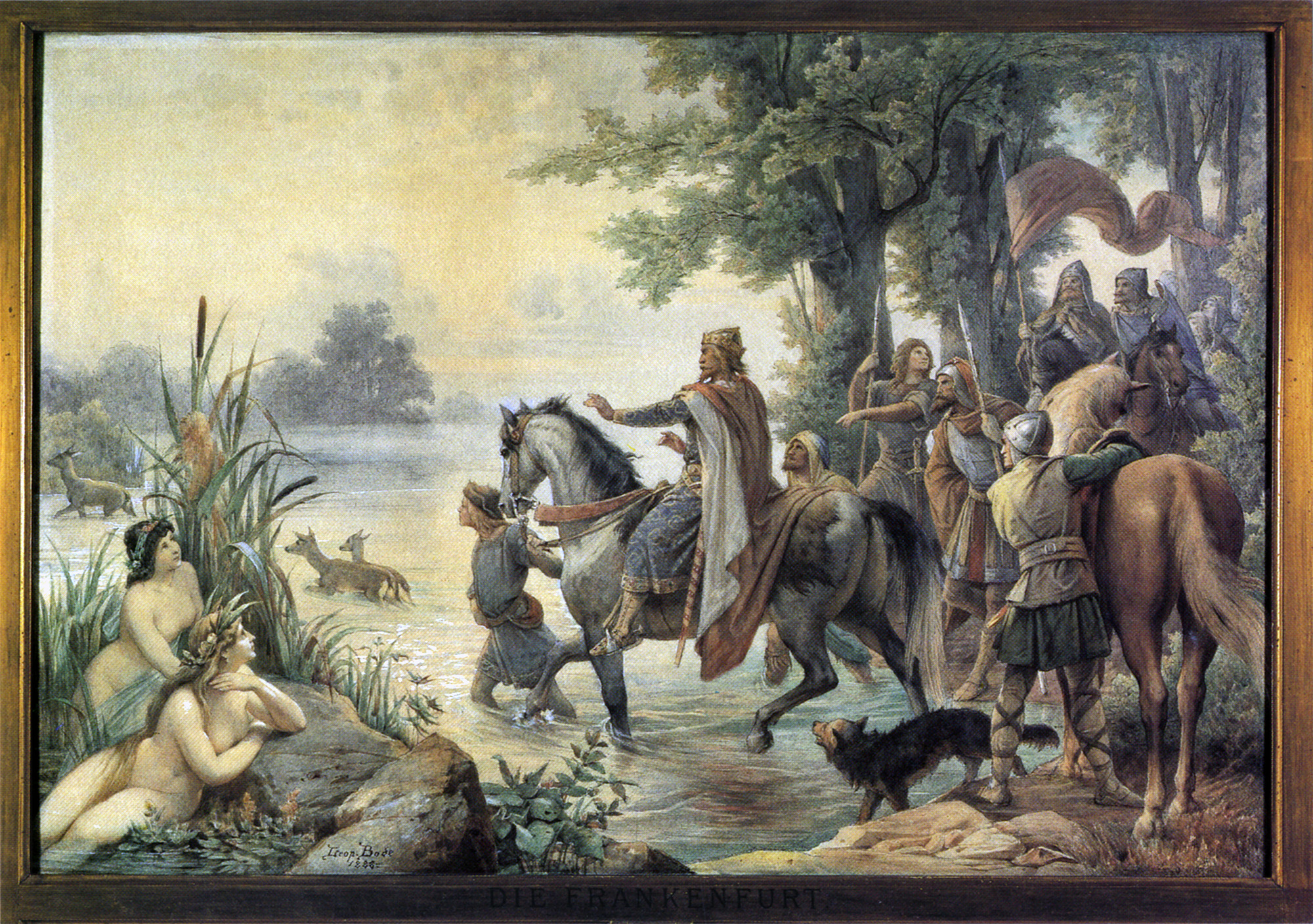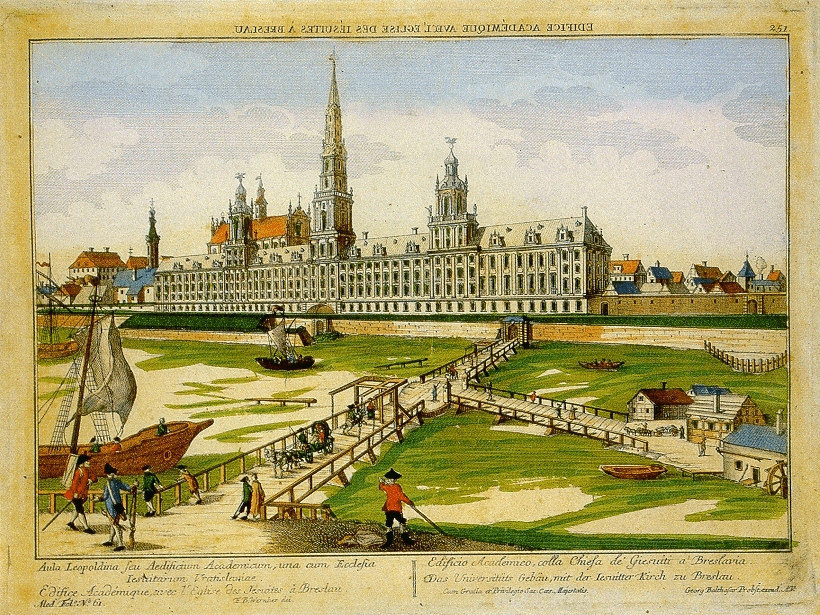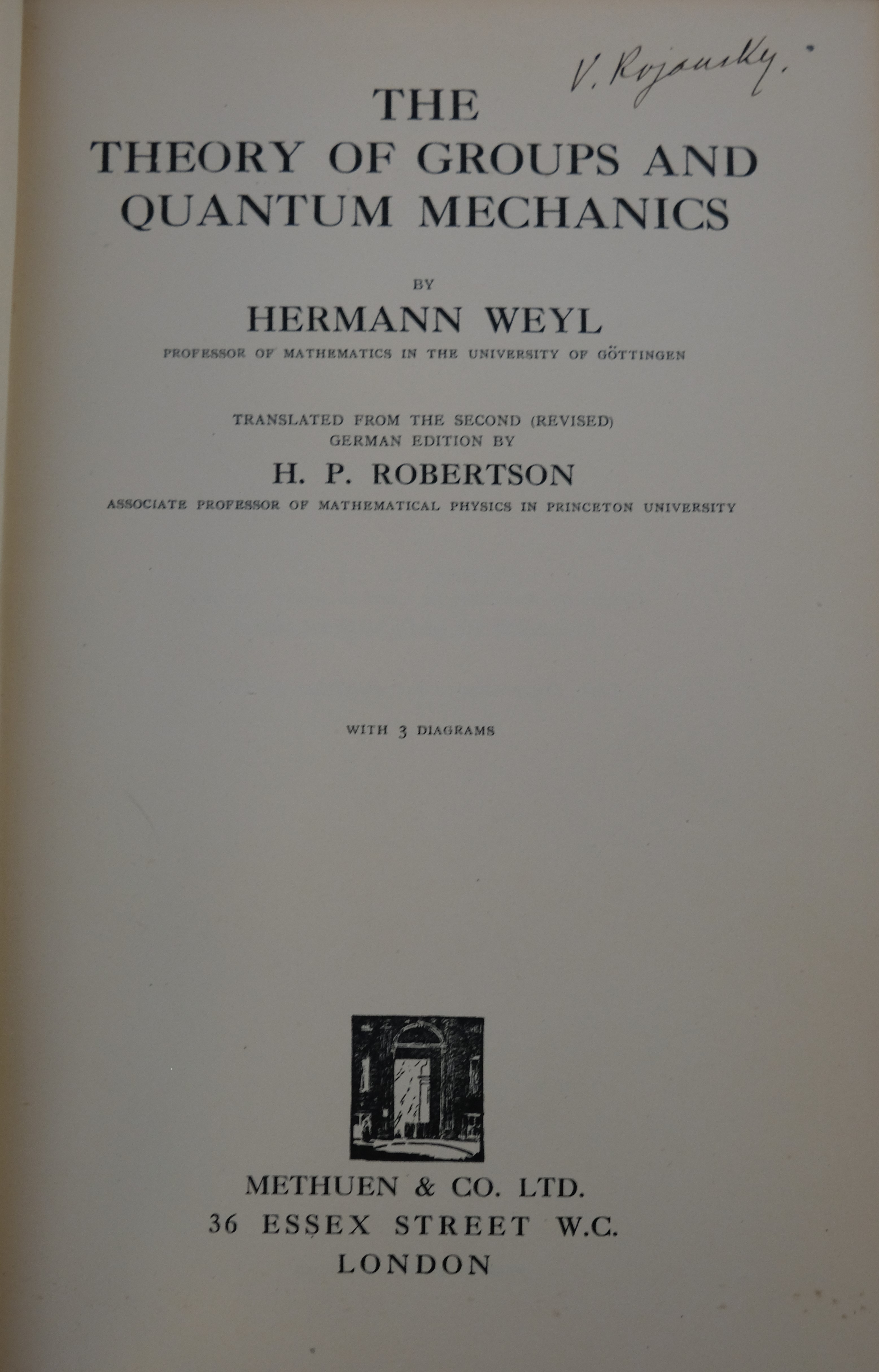|
Fritz Bopp
Friedrich Arnold "Fritz" Bopp (27 December 1909 – 14 November 1987) was a German theoretical physicist who contributed to nuclear physics and quantum field theory. He worked at the '' Kaiser-Wilhelm Institut für Physik'' and with the ''Uranverein''. He was a professor at the Ludwig Maximilian University of Munich and a President of the Deutsche Physikalische Gesellschaft. He signed the Göttingen Manifesto. Education From 1929 to 1934, Bopp studied physics at the Goethe University Frankfurt and the University of Göttingen. He completed his Diplom thesis in 1933 under the mathematician Hermann Weyl. In 1934, he became an ''Assistant'' (Assistant) at Göttingen. In 1937, Bopp completed his doctorate on the subject of Compton scattering under the physicist Fritz Sauter. From 1936 to 1941, he was a teaching assistant at Breslau University. In 1941, Bopp completed his ''Habilitationsschrift'' under Erwin Fues on the subject of a consistent field theory of the electron.Hentsche ... [...More Info...] [...Related Items...] OR: [Wikipedia] [Google] [Baidu] |
Frankfurt
Frankfurt am Main () is the most populous city in the States of Germany, German state of Hesse. Its 773,068 inhabitants as of 2022 make it the List of cities in Germany by population, fifth-most populous city in Germany. Located in the foreland of the Taunus on its namesake Main (river), Main, it forms a continuous conurbation with Offenbach am Main; Frankfurt Rhein-Main Regional Authority, its urban area has a population of over 2.7 million. The city is the heart of the larger Rhine-Main metropolitan region, which has a population of more than 5.8 million and is Germany's Metropolitan regions in Germany, second-largest metropolitan region after the Rhine-Ruhr metropolitan region, Rhine-Ruhr region and the List of EU metropolitan regions by GDP#2021 ranking of top four German metropolitan regions, fourth largest metropolitan region by GDP in the European Union (EU). Frankfurt is one of the ''de facto'' four main capitals of the European Union (alongside Brussels, Luxembourg Cit ... [...More Info...] [...Related Items...] OR: [Wikipedia] [Google] [Baidu] |
Deutsche Physikalische Gesellschaft
The German Physical Society (German: , DPG) is the oldest organisation of physicists. As of 2022, the DPG's worldwide membership is cited as 52,220, making it one of the largest national physics societies in the world. The DPG's membership peaked in 2014 when it reached 63,000, but it has been decreasing since then. It holds an annual conference () and multiple spring conferences (), which are held at various locations and along topical subjects of given sections of the DPG. The DPG concerns the fields of pure and applied physics and aims to foster connections among German physicists, as well as the exchange of ideas between its members and foreign colleagues. The bylaws of the DPG commit the organization and its members to maintain scientific integrity and ethics, including freedom, tolerance, truthfulness, and dignity in scientific work, as well as the promotion of gender equality in the fields of physics and related sciences. Conferences The DPG itself does not carry out any r ... [...More Info...] [...Related Items...] OR: [Wikipedia] [Google] [Baidu] |
German Nuclear Energy Project
Nazi Germany undertook several research programs relating to nuclear technology, including nuclear weapons and nuclear reactors, before and during World War II. These were variously called () or (). The first effort started in April 1939, just months after the discovery of nuclear fission in Berlin in December 1938, but ended shortly ahead of the September 1939 German invasion of Poland, for which many German physicists were drafted into the . A second effort under the administrative purview of the 's began on September 1, 1939, the day of the invasion of Poland. The program eventually expanded into three main efforts: (nuclear reactor) development, uranium and heavy water production, and uranium isotope separation. Eventually, the German military determined that nuclear fission would not contribute significantly to the war, and in January 1942 the turned the program over to the Reich Research Council () while continuing to fund the activity. The program was split up among ... [...More Info...] [...Related Items...] OR: [Wikipedia] [Google] [Baidu] |
Dahlem (Berlin)
Dahlem ( or ) is a locality of the Steglitz-Zehlendorf borough in southwestern Berlin. Until Berlin's 2001 administrative reform it was a part of the former borough of Zehlendorf. It is located between the mansion settlements of Grunewald and Lichterfelde West. Dahlem is one of the most affluent parts of the city and a center for academic research. It is home to the Freie Universität Berlin, with its architecturally significant Philological Library ''("The Brain")''. Several other research institutions and museums, as well as parts of the Grunewald forest with its renaissance hunting lodge, are located in Dahlem. The U3 line of the Berlin U-Bahn system connects Dahlem to central Berlin. History The first written account of Dahlem dates to the year 1275. The history of the village is connected to the Dahlem Demesne (''Domäne Dahlem'') first mentioned in 1450. Its estates were sold to the state of Prussia in 1841 and developed by dividing it into lots for building v ... [...More Info...] [...Related Items...] OR: [Wikipedia] [Google] [Baidu] |
Max Planck Institute For Physics
The Max Planck Institute for Physics (MPP) is a research institute located in Garching, near Munich, Germany. It specializes in high energy physics and astroparticle physics. The MPP is part of the Max Planck Society and is also known as the Werner Heisenberg Institute, after its first director in its current location. The founding of the institute traces back to 1914, as an idea from Fritz Haber, Walther Nernst, Max Planck, Emil Warburg, Heinrich Rubens. On October 1, 1917, the institute was officially founded in Berlin as '' Kaiser-Wilhelm-Institut für Physik'' (KWIP, Kaiser Wilhelm Institute for Physics) with Albert Einstein as the first head director.Geschichte " (in German). Max Planck Institute for Physics. Abbreviated version in English: [...More Info...] [...Related Items...] OR: [Wikipedia] [Google] [Baidu] |
Electron
The electron (, or in nuclear reactions) is a subatomic particle with a negative one elementary charge, elementary electric charge. It is a fundamental particle that comprises the ordinary matter that makes up the universe, along with up quark, up and down quark, down quarks. Electrons are extremely lightweight particles that orbit the positively charged atomic nucleus, nucleus of atoms. Their negative charge is balanced by the positive charge of protons in the nucleus, giving atoms their overall electric charge#Charge neutrality, neutral charge. Ordinary matter is composed of atoms, each consisting of a positively charged nucleus surrounded by a number of orbiting electrons equal to the number of protons. The configuration and energy levels of these orbiting electrons determine the chemical properties of an atom. Electrons are bound to the nucleus to different degrees. The outermost or valence electron, valence electrons are the least tightly bound and are responsible for th ... [...More Info...] [...Related Items...] OR: [Wikipedia] [Google] [Baidu] |
Quantum Field Theory
In theoretical physics, quantum field theory (QFT) is a theoretical framework that combines Field theory (physics), field theory and the principle of relativity with ideas behind quantum mechanics. QFT is used in particle physics to construct physical models of subatomic particles and in condensed matter physics to construct models of quasiparticles. The current standard model of particle physics is based on QFT. History Quantum field theory emerged from the work of generations of theoretical physicists spanning much of the 20th century. Its development began in the 1920s with the description of interactions between light and electrons, culminating in the first quantum field theory—quantum electrodynamics. A major theoretical obstacle soon followed with the appearance and persistence of various infinities in perturbative calculations, a problem only resolved in the 1950s with the invention of the renormalization procedure. A second major barrier came with QFT's apparent inabili ... [...More Info...] [...Related Items...] OR: [Wikipedia] [Google] [Baidu] |
Erwin Fues
Erwin Richard Fues (17 January 1893 in Stuttgart, Germany – 17 January 1970, Germany), was a German theoretical physicist who made contributions to atomic physics and molecular physics, quantum wave mechanics, and solid-state physics. Education and career During the period 1912 to 1914, Fues studied at the University of Berlin and then the University of Munich. He served in the military in 1914 to circa 1915, and then attended the University of Tübingen from 1916 to 1918. During 1918, he became a student of Arnold Sommerfeld and he received the ''doctor rerum naturalium'' from the University of Munich in 1920. From 1922 he did postgraduate work at the Stuttgart ''Technische Hochschule'', under Paul Peter Ewald, also a former student of Arnold Sommerfeld, and he completed his Habilitation in 1924. At Stuttgart he served as a ''Privatdozent'' and assistant to Ewald until 1929, during which time he worked on atomic and molecular structure and spectroscopy based on the Sommerfeld- ... [...More Info...] [...Related Items...] OR: [Wikipedia] [Google] [Baidu] |
Habilitationsschrift
Habilitation is the highest university degree, or the procedure by which it is achieved, in Germany, France, Italy, Poland and some other European and non-English-speaking countries. The candidate fulfills a university's set criteria of excellence in research, teaching, and further education, which usually includes a dissertation. The degree, sometimes abbreviated ''Dr. habil''. (), ''dr hab.'' (), or ''D.Sc.'' ('' Doctor of Sciences'' in Russia and some CIS countries), is often a qualification for full professorship in those countries. In German-speaking countries it allows the degree holder to bear the title ''PD'' (for ). In a number of countries there exists an academic post of docent, appointment to which often requires such a qualification. The degree conferral is usually accompanied by a public oral defence event (a lecture or a colloquium) with one or more opponents. Habilitation is usually awarded 5–15 years after a PhD degree or its equivalent. Achieving this ... [...More Info...] [...Related Items...] OR: [Wikipedia] [Google] [Baidu] |
University Of Wrocław
The University of Wrocław (, UWr; ) is a public research university in Wrocław, Poland. It is the largest institution of higher learning in the Lower Silesian Voivodeship, with over 100,000 graduates since 1945, including some 1,900 researchers, among whom many have received the highest awards for their contributions to the development of scientific scholarship. The university was reconstituted in its current form in 1945, as a direct successor to the previous German University of Breslau. Following the territorial changes of Poland's borders, academics primarily from the Jan Kazimierz University of Lwów restored the university building, which had been heavily damaged in the 1945 Battle of Breslau. History Leopoldina The oldest mention of a university in Wrocław comes from the foundation deed signed on 20 July 1505 for the ''Generale litterarum Gymnasium'' in Wrocław by King Vladislaus II of Hungary () of the Polish Jagiellonian dynasty. However, the new academic ... [...More Info...] [...Related Items...] OR: [Wikipedia] [Google] [Baidu] |
Compton Scattering
Compton scattering (or the Compton effect) is the quantum theory of high frequency photons scattering following an interaction with a charged particle, usually an electron. Specifically, when the photon hits electrons, it releases loosely bound electrons from the outer valence shells of atoms or molecules. The effect was discovered in 1923 by Arthur Holly Compton while researching the scattering of X-rays by light elements, and earned him the Nobel Prize in Physics in 1927. The Compton effect significantly deviated from dominating classical theories, using both special relativity and quantum mechanics to explain the interaction between high frequency photons and charged particles. Photons can interact with matter at the atomic level (e.g. photoelectric effect and Rayleigh scattering), at the nucleus, or with just an electron. Pair production and the Compton effect occur at the level of the electron. When a high frequency photon scatters due to an interaction with a charged part ... [...More Info...] [...Related Items...] OR: [Wikipedia] [Google] [Baidu] |
Hermann Weyl
Hermann Klaus Hugo Weyl (; ; 9 November 1885 – 8 December 1955) was a German mathematician, theoretical physicist, logician and philosopher. Although much of his working life was spent in Zürich, Switzerland, and then Princeton, New Jersey, he is associated with the University of Göttingen tradition of mathematics, represented by Carl Friedrich Gauss, David Hilbert and Hermann Minkowski. His research has had major significance for theoretical physics as well as purely mathematical disciplines such as number theory. He was one of the most influential mathematicians of the twentieth century, and an important member of the Institute for Advanced Study during its early years. Weyl contributed to an exceptionally wide range of fields, including works on space, time, matter, philosophy, logic, symmetry and the history of mathematics. He was one of the first to conceive of combining general relativity with the laws of electromagnetism. Freeman Dyson wrote that Weyl alone bore comp ... [...More Info...] [...Related Items...] OR: [Wikipedia] [Google] [Baidu] |






